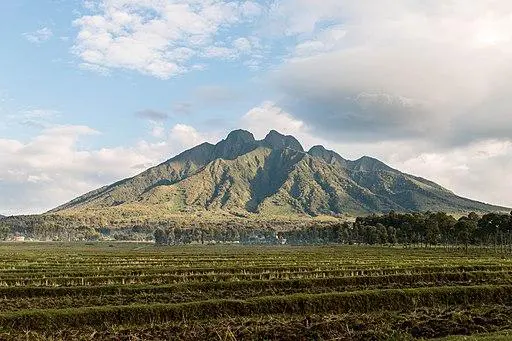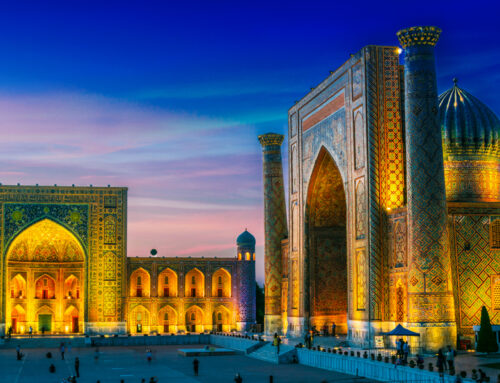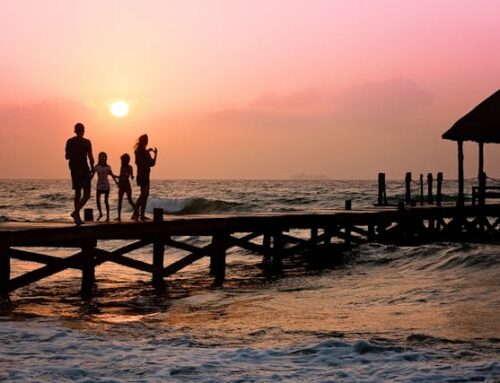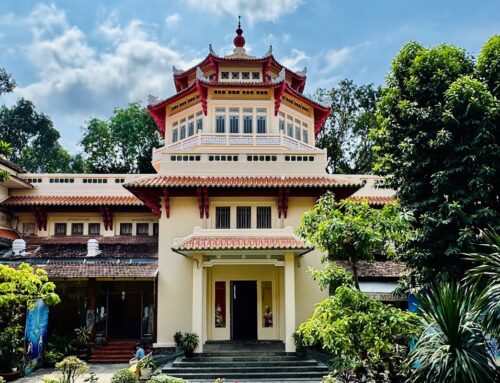Take a Thrilling Adventure in Uganda Hiking the Sabyinyo Volcano

Hiking Sabyinyo Volcano in Uganda
Sabyinyo volcano, located on the border of Uganda, Rwanda, and Congo in the Virunga Mountains, is simply incredible! Here is a summary of the most important information about the hike that can become one of the most amazing experiences of your life.
Key Information
- Hiking the Sabyinyo volcano takes approximately 7 to 9 hours.
- During the hike, you will climb three peaks of Sabyinyo volcano (the first at 3423m, the second at 3537m, and the third at 3669m).
- The elevation gain is 1220 meters.
- There are many improvised ladders on the route (especially near the peaks).
- Entry to the mountain from the Uganda side costs $80 per person and is payable only by card.
- A guide and two armed rangers accompany each group.
Mgahinga National Park in Uganda
Established in 1991, Mgahinga National Park in Uganda is a must-visit if you plan a trip to East Africa. It borders the famous Volcanoes National Park in Rwanda, where you can also go gorilla trekking. Unfortunately, it’s a costly activity.
Although gorilla spotting in Uganda are much cheaper than in Rwanda, $800 per person is still a price far exceeding a budget traveler’s funds. As someone who simply loves hiking in the mountains, I really wanted to climb one of the volcanoes in Mgahinga. Luckily, I met a fantastic group of Polish people who we joined on our trip to Uganda. It turned out that hiking one of the volcanoes in Mgahinga was also on their bucket list.
Of the three available peaks (Muhabura, Gahinga, and Sabyinyo), we decided on the last one. And we don’t regret our decision at all!
Sabyinyo Volcano
Sabyinyo volcano is the oldest cone in the Virunga Mountains that stretch across Rwanda, Uganda, and the Democratic Republic of Congo. In addition, the tripoint of the three countries passes precisely through the third peak of Sabyinyo.
The name “Sabyinyo” comes from the Kinyarwanda language and means “tooth”. The local people also call it “the old man’s teeth” because its jagged peak resembles the teeth of an old person, in contrast to the perfectly conical peaks of neighboring volcanoes. Sabyinyo rises to a height of 3669 m above sea level and is home to a variety of flora and fauna, including mountain gorillas, golden monkeys, as well as buffaloes, and elephants.
Formalities
Visa
If you decide to hike the Sabyinyo volcano from Uganda, you should remember to have an appropriate visa. A tourist single-entry visa to Uganda costs $50. You have to apply for it before, as there is no visa-on-arrival policy in Uganda! Fortunately, you can easily apply for a visa to Uganda online or purchase the East African Tourist Visa that allows you to travel to Rwanda, Uganda, and Kenya.
Prior to the Hike
The trekking starts at the Mgahinga National Park Visitor Center. According to the information on the websites of various tourist agencies in Uganda, you are supposed to be there punctually at 7:00 am. As Ugandans have a relaxed attitude towards punctuality, our arrival at 7:30 did not ruin our plan to climb the volcano.
The first thing you should do upon arrival is to pay $80 for hiking the Sabyinyo volcano. Remember, you can do it only with a credit or debit card!
Next, there is a short briefing during which the guide explains the specifics of trekking and justifies why two armed rangers accompany each group. Along the trail, you might accidentally come across wild animals such as elephants, buffaloes, and even – if you’re lucky – mountain gorillas. If such a situation occurs, the role of the ranger is to scare away the animals (a shot in the air is enough). We only saw fairly fresh elephant tracks with our own eyes.
In addition, each person receives a bamboo stick, which is incredibly helpful during trekking. It’s very useful so don’t hesitate to take one!
Hiking the Sabyinyo Volcano
We started our trek precisely at 8:10. Besides the guide and two rangers, the group consisted of seven people, one of whom gave up after reaching the first peak.
The first three kilometers are very easy. The trail leads through fields, groves, and bamboo forests. You can treat it as a nice warm-up before the further, fairly strenuous part that begins with entering the dense forest. And here’s where the fun begins!
The next 2 – 2.5 kilometers are a steep and almost uniform uphill climb. From this point on, our group clearly split into two smaller groups. With three guys and a ranger named Jackson, we relentlessly pushed forward, admiring the impressive summit of the neighboring volcano Muhabura that emerged from time to time. The first improvised ladders began to appear, which were installed to increase the comfort and safety of the climb.
Finally, at 10:50, we stood on the first peak of Mount Sabyinyo. From this place, you will clearly see the second and third peaks.
After five minutes of rest, we started walking further. A large number of wooden steps and ladders characterize the section between the peaks. As a rule, I don’t like such things on mountain trails. However, I must admit that in this case, not only are they very useful and make the passage more varied, but they also look amazing in photos (not to mention in reality)!
We reached the second peak after 25 minutes. That’s already 3537 meters above sea level! Breathing was noticeably shallower, but the views – as if copied and pasted from Avatar.
Exactly at 11:50, we arrived at the highest, third peak of Mount Sabyinyo and stood at the point where the borders of Uganda, Rwanda, and Congo intersect. I must admit that the panorama from the summit is one of the most beautiful views I have ever seen in my life. Something incredible.
After about an hour, our friends arrived. We spent the waiting time chilling, eating, and taking nice photos. The descent took us 5 hours. Therefore, we reached the Visitor Center around 4:30 pm.
***************************
About The Author: Michal Jonca is passionate about trail running and travel experiences. He visited 40+ countries on four continents. Michal is a Travel Leader at Solisci Adventure Club and the Community Manager at PhotoAiD. Currently, he enjoys the life of a digital nomad in Georgia and Armenia.




